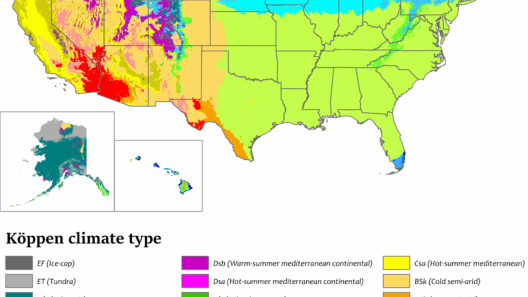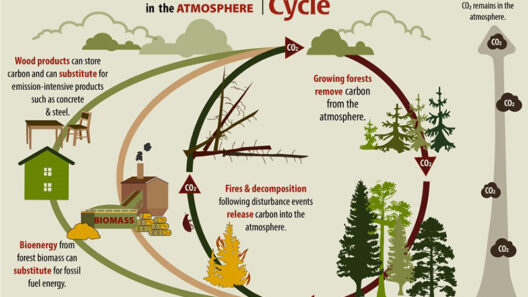San Diego, a gem nestled along the southern California coast, is often heralded for its remarkable climate. The city experiences a temperate Mediterranean climate that remains largely stable throughout the year. With an average annual temperature hovering around 70 degrees Fahrenheit, it’s easy to see why residents and visitors alike refer to San Diego as America’s year-round sweet spot. However, beneath this seemingly idyllic façade lies a complex interplay of geographical, meteorological, and ecological factors that shape its distinctive climatic character.
San Diego is situated on the Pacific Coast, which grants it access to the moderating effects of oceanic currents. The proximity to the Pacific Ocean acts as a thermal regulator, minimizing fluctuations in temperature. In summer, coastal breezes provide a gentle respite from the heat, while winter waters keep the air temperature relatively mild. This results in a unique weather phenomenon known as “marine layer”, where fog and clouds linger along the coastline during summer months, providing a dramatic contrast to the sun-drenched inland areas.
The region typifies a Mediterranean climatic zone, characterized by warm, dry summers and mild, wetter winters. This seasonal dichotomy is particularly fascinating, as it not only supports a diverse range of flora and fauna but also influences human activities, agriculture, and urban planning. The winter months, from November to March, typically receive the bulk of San Diego’s annual precipitation, totaling around 10-12 inches. While this may seem modest compared to other regions, it provides essential water resources that sustain the verdant landscapes and agricultural practices in the vicinity.
Beyond the normative weather patterns, aligning geographical features profoundly impacts local climate dynamics. San Diego’s topography includes coastal cliffs, rolling hills, and mountain ranges that play a critical role in shaping microclimates across the region. Areas such as the inland valleys can experience significantly higher temperatures than coastal zones. This diversity creates habitats that support various ecosystems, from coastal sage scrub and chaparral to lush riparian zones, which contribute to the city’s ecological richness. Environmental scientists emphasize that understanding these microclimate variations is crucial for effective conservation and urban sustainability efforts.
The fascination with San Diego’s climate extends beyond its physical properties; it also encompasses the implications for lifestyle and culture. The temperate weather fosters outdoor activities and a vibrant social scene. Residents can engage in recreational pursuits year-round, whether surfing the waves, hiking the scenic trails, or dining al fresco. This propensity for outdoor living is ingrained in the local culture, symbolizing a lifestyle that values leisure and well-being. The city’s climate also attracts a plethora of tourists, positioning San Diego as a premier destination in the tourism sector.
Yet, amid this climate utopia lies an equally pressing concern—the effects of climate change. The very stability that characterizes San Diego’s climate is at risk due to alterations brought about by global warming. Rising sea levels threaten coastal communities, while increased temperatures may exacerbate drought conditions. The potential for more intense and prolonged heatwaves raises alarms among climate scientists and environmental activists alike. Moreover, changes in precipitation patterns could disrupt the delicate balance of ecosystems, leading to detrimental impacts on water resources and biodiversity.
The threat of climate change invigorates discussions surrounding sustainability, conservation, and urban resilience. Local governments and organizations are increasingly implementing strategies to mitigate these challenges. Innovative approaches, such as enhancing water conservation practices, promoting renewable energy sources, and integrating green infrastructure, are becoming commonplace. The community’s proactive stance in addressing environmental issues reflects a deeper understanding of the interconnected nature of climate and society.
In addition, San Diego boasts a commitment to preserving its natural beauty. Initiatives aimed at combating urban sprawl emphasize the importance of maintaining green spaces and habitats. The preservation of coastal areas and sensitive ecological regions is critical, not only for the environment but also for the vitality of local communities. Such measures are essential for safeguarding biodiversity and ensuring that future generations can enjoy the same climatic advantages that residents currently cherish.
What delights many about San Diego’s climate is its capacity to inspire a profound appreciation for the environment. The city serves as a microcosm of the broader climate challenges faced by coastal urban centers across the globe. Its position as a leader in climate resilience showcases the vital role urban areas play in combating the effects of climate change. By fostering community engagement and advocacy, San Diego embodies a model that other regions can emulate in their journey towards sustainability.
In conclusion, San Diego’s climate is more than just a physical attribute; it is a vital component of its identity and a pivotal factor in the interactions of its inhabitants with the world around them. The intricate tapestry of meteorological patterns, geographical influences, and human activities creates a unique climate that continues to captivate and inspire. However, the realities of climate change demand vigilant stewardship and proactive adaptation strategies. As such, San Diego not only stands as a perennial destination for enjoyment but also as a beacon for environmental responsibility, reminding us all that the beauty of our climate is intricately woven with the duty to protect it.








